D H Lawrence [Lawrence - D H Lawrence- The Dover Reader
Here you can read online D H Lawrence [Lawrence - D H Lawrence- The Dover Reader full text of the book (entire story) in english for free. Download pdf and epub, get meaning, cover and reviews about this ebook. year: 2015, publisher: Dover Publications, genre: Non-fiction. Description of the work, (preface) as well as reviews are available. Best literature library LitArk.com created for fans of good reading and offers a wide selection of genres:
Romance novel
Science fiction
Adventure
Detective
Science
History
Home and family
Prose
Art
Politics
Computer
Non-fiction
Religion
Business
Children
Humor
Choose a favorite category and find really read worthwhile books. Enjoy immersion in the world of imagination, feel the emotions of the characters or learn something new for yourself, make an fascinating discovery.
- Book:D H Lawrence- The Dover Reader
- Author:
- Publisher:Dover Publications
- Genre:
- Year:2015
- Rating:5 / 5
- Favourites:Add to favourites
- Your mark:
- 100
- 1
- 2
- 3
- 4
- 5
D H Lawrence- The Dover Reader: summary, description and annotation
We offer to read an annotation, description, summary or preface (depends on what the author of the book "D H Lawrence- The Dover Reader" wrote himself). If you haven't found the necessary information about the book — write in the comments, we will try to find it.
D H Lawrence [Lawrence: author's other books
Who wrote D H Lawrence- The Dover Reader? Find out the surname, the name of the author of the book and a list of all author's works by series.
D H Lawrence- The Dover Reader — read online for free the complete book (whole text) full work
Below is the text of the book, divided by pages. System saving the place of the last page read, allows you to conveniently read the book "D H Lawrence- The Dover Reader" online for free, without having to search again every time where you left off. Put a bookmark, and you can go to the page where you finished reading at any time.
Font size:
Interval:
Bookmark:

D. H. Lawrence

DOVER PUBLICATIONS, INC.
Mineola, New York
DOVER THRIFT EDITIONS
GENERAL EDITOR: MARY CAROLYN WALDREP
EDITOR OF THIS VOLUME: ALISON DAURIO
Copyright
Copyright 2015 by Dover Publications, Inc.
All rights reserved.
Bibliographical Note
D. H. Lawrence: The Dover Reader, first published by Dover Publications, Inc., in 2015, is a new compilation of works by D. H. Lawrence, reprinted from authoritative sources. The Note has been specially prepared for the Dover edition.
International Standard Book Number
eISBN-13: 978-0-486-80302-9
Manufactured in the United States by Courier Corporation
79118101 2015
www.doverpublications.com
Note
DAVID HERBERT LAWRENCE (18851930) was born in Eastwood, England, the fourth son of a Nottingham coal miner and a former schoolteacher. He was a sickly child, but his mother insisted on furthering his education. He graduated from a teacher-training course at University College in Nottingham, and shortly thereafter became a schoolmaster in a London suburb. In 1909 some of his poetry was published in The English Review, and by 1911 he had published his first novel (The White Peacock). Lawrence would go on to publish some of the most outstanding and controversial novels and short stories of the twentieth century. Among his works preeminent themes are the ongoing relationship between sexual and emotional life, and the far-reaching implications of class difference for both the individual psyche and the family. The public found his stunning psychological realism provocative, and protested both the sensuous nature of his writing as well as the overt sexual freedom he depicted. Consequently, numerous accusations of obscenity were leveled against him, and several of his books were banned. Today, however, he is praised for his artistic ingenuity and integrity, and is considered an essential part of the English literary canon. Lawrence emphasized honest emotions and impulses, a concept that he expressed clearly in 1912 when he wrote, What the blood feels, and believes, is always true. He also wrote a number of travel books, essays, translations, and plays.
The present volume includes Lawrences finest achievements over several literary genres, from his masterpiece, Sons and Lovers (1913), a semi-autobiographical novel which chronicles a young mans progression into adulthood, to a selection of short stories, poems, and a non-fiction work on psychoanalytic theory.
Contents
Sons and Lovers
PART ONE
CHAPTER 1
THE EARLY MARRIED LIFE OF THE MORELS
THE BOTTOMS succeeded to Hell Row. Hell Row was a block of thatched bulging cottages that stood by the brookside on Greenhill Lane. There lived the colliers who worked in the little gin-pits two fields away. The brook ran under the alder-trees, scarcely soiled by these small mines, whose coal was drawn to the surface by donkeys that plodded wearily in a circle round a gin. And all over the countryside were these same pits, some of which had been worked in the time of Charles II, the few colliers and the donkeys burrowing down like ants into the earth, making queer mounds and little black places among the corn-fields and the meadows. And the cottages of these coal-miners, in blocks and pairs here and there, together with odd farms and homes of the stockingers, straying over the parish, formed the village of Bestwood.
Then, some sixty years ago, a sudden change took place. The gin-pits were elbowed aside by the large mines of the financiers. The coal and iron field of Nottinghamshire and Derbyshire was discovered. Carston, Waite and Co. appeared. Amid tremendous excitement, Lord Palmerston formally opened the companys first mine at Spinney Park, on the edge of Sherwood Forest.
About this time the notorious Hell Row, which through growing old had acquired an evil reputation, was burned down, and much dirt was cleansed away.
Carston, Waite and Co. found they had struck on a good thing, so, down the valleys of the brooks from Selby and Nuttall, new mines were sunk, until soon there were six pits working. From Nuttall, high up on the sandstone among the woods, the railway ran, past the ruined priory of the Carthusians and past Robin Hoods Well, down to Spinney Park, then on to Minton, a large mine among corn-fields, from Minton across the farm-lands of the valley-side to Bunkers Hill, branching off there, and running north to Beggarlee and Selby, that looks over at Crich and the hills of Derbyshire; six mines like black studs on the countryside, linked by a loop of fine chain, the railway.
To accommodate the regiments of miners, Carston, Waite and Co. built the Squares, great quadrangles of dwellings on the hillside of Bestwood, and then, in the brook valley, on the site of Hell Row, they erected the Bottoms.
The Bottoms consisted of six blocks of miners dwellings, two rows of three, like the dots on a blank-six domino, and twelve houses in a block. This double row of dwellings sat at the foot of the rather sharp slope from Bestwood, and looked out, from the attic windows at least, on the slow climb of the valley towards Selby.
The houses themselves were substantial and very decent. One could walk all round, seeing little front gardens with auriculas and saxifrage in the shadow of the bottom block, sweet-williams and pinks in the sunny top block; seeing neat front windows, little porches, little privet hedges, and dormer windows for the attics. But that was outside; that was the view on to the uninhabited parlours of all the colliers wives. The dwelling-room, the kitchen, was at the back of the house, facing inward between the blocks, looking at a scrubby back garden, and then at the ash-pits. And between the rows, between the long lines of ash-pits, went the alley, where the children played and the women gossiped and the men smoked. So, the actual conditions of living in the Bottoms, that was so well built and that looked so nice, were quite unsavoury because people must live in the kitchen, and the kitchens opened on to that nasty alley of ash-pits.
Mrs. Morel was not anxious to move into the Bottoms, which was already twelve years old and on the downward path, when she descended to it from Bestwood. But it was the best she could do. Moreover, she had an end house in one of the top blocks, and thus had only one neighbour; on the other side an extra strip of garden. And, having an end house, she enjoyed a kind of aristocracy among the other women of the between houses, because her rent was five shillings and sixpence instead of five shillings a week. But this superiority in station was not much consolation to Mrs. Morel.
She was thirty-one years old, and had been married eight years. A rather small woman, of delicate mould but resolute bearing, she shrank a little from the first contact with the Bottoms women. She came down in the July, and in the September expected her third baby.
Her husband was a miner. They had only been in their new home three weeks when the wakes, or fair, began. Morel, she knew, was sure to make a holiday of it. He went off early on the Monday morning, day of the fair. The two children were highly excited. William, a boy of seven, fled off immediately after breakfast, to prowl round the wakes ground, leaving Annie, who was only five, to whine all morning to go also. Mrs. Morel did her work. She scarcely knew her neighbours yet, and knew no one with whom to trust the little girl. So she promised to take her to the wakes after dinner.
Next pageFont size:
Interval:
Bookmark:
Similar books «D H Lawrence- The Dover Reader»
Look at similar books to D H Lawrence- The Dover Reader. We have selected literature similar in name and meaning in the hope of providing readers with more options to find new, interesting, not yet read works.
Discussion, reviews of the book D H Lawrence- The Dover Reader and just readers' own opinions. Leave your comments, write what you think about the work, its meaning or the main characters. Specify what exactly you liked and what you didn't like, and why you think so.





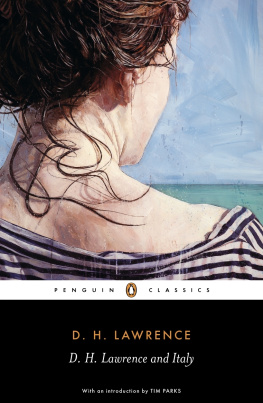
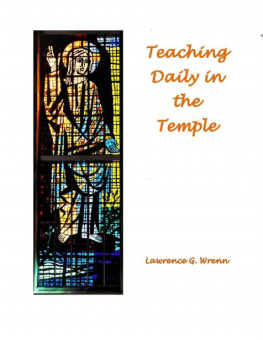
![Lawrence Durrell [Lawrence Durrell] - Caesar’s Vast Ghost](/uploads/posts/book/142113/thumbs/lawrence-durrell-lawrence-durrell-caesar-s.jpg)
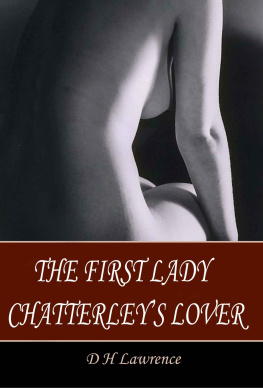
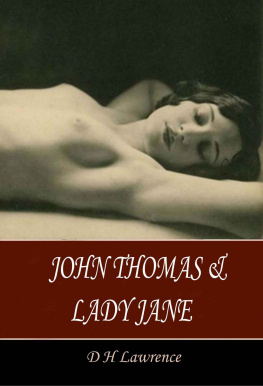
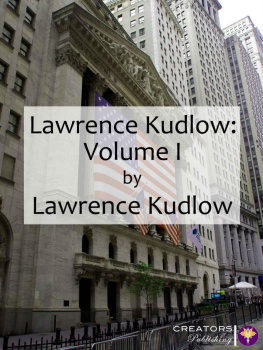
![D. H. Lawrence [Lawrence - Sons and Lovers [Annotated Version]](/uploads/posts/book/61295/thumbs/d-h-lawrence-lawrence-sons-and-lovers.jpg)